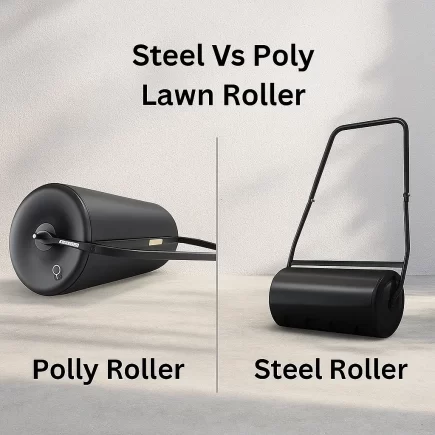When it comes to creating the perfect outdoor environment, few features can compete with the charm and warmth of a fire pit. Whether you’re hosting a backyard gathering or simply enjoying a quiet evening outdoors, a fire pit can make your space feel inviting, cozy, and relaxing. However, the decision to choose between a gas and wood fire pit can be a tricky one. Both options offer unique benefits, but they also come with distinct differences in terms of usage, aesthetics, cost, and maintenance.

In this article, we’ll take an in-depth look at both gas and wood fire pits, comparing their advantages and disadvantages to help you make an informed decision that aligns with your needs, budget, and outdoor lifestyle.
Key Factors to Consider When Choosing a Fire Pit

1. Space and Location
When deciding between a gas or wood fire pit, it’s essential to consider the space and location. Gas fire pits require a propane tank or a natural gas line, so you’ll need to place them near a gas source or ensure there’s enough space for a tank. This requires more careful planning, especially in terms of the gas connections. On the other hand, wood fire pits offer more flexibility in placement since they don’t need any fuel connection. However, you’ll need to ensure that the smoke won’t disturb neighbors, particularly on windy days, and you’ll also need a dedicated space for storing firewood.
2. Legal Regulations and Restrictions
In terms of legal regulations and restrictions, gas fire pits may have specific installation rules depending on local fire regulations, especially if you’re connecting them to a natural gas line. It’s always a good idea to check with your local fire department or homeowners association (HOA). Wood fire pits, however, are often subject to fire bans, especially in dry weather. Local authorities may require permits, and you need to ensure that you comply with smoke and pollution regulations.
3. Ambiance
The ambiance of your fire pit can dramatically influence the mood of your outdoor space. A wood fire pit creates a cozy, rustic atmosphere, complete with the crackling of wood and the smell of burning logs, perfect for those who enjoy a more traditional and immersive fire experience. In contrast, gas fire pits are ideal for creating a modern, controlled environment. With adjustable flames, they offer a sleek look and a smoke-free experience, making them low-maintenance and suitable for those who prefer a cleaner, more stylish outdoor space.
Comparing Gas and Wood Fire Pits: Pros and Cons

1. Gas Fire Pits: Benefits and Drawbacks
1. Advantages of Gas Fire Pits
- Convenience and Instant Ignition: Gas fire pits can be lit with the press of a button, providing immediate warmth without waiting for logs to catch fire.
- Low Maintenance: Gas fire pits are easy to maintain with no ash, soot, or wood storage required.
- Clean Burn: They emit no smoke, making them ideal for those who prefer a cleaner fire and live in areas with air quality concerns.
- Adjustable Flame: The flame intensity can be controlled, allowing you to adjust the heat and ambiance.
2. Disadvantages of Gas Fire Pits
- Higher Initial Cost: Gas fire pits are typically more expensive, ranging from $800 to $3,000+, including installation costs if you need to connect to a gas line.
- Fuel Dependency: Gas fire pits require propane refills or natural gas, which can lead to ongoing costs.
- Limited Cooking Potential: Gas fire pits are not as versatile for cooking as wood-burning pits. Cooking over a gas fire is typically limited to small grilling options.
2. Wood Fire Pits: Benefits and Drawbacks
1. Advantages of Wood Fire Pits
- Traditional Experience: Wood-burning fire pits offer a classic, nostalgic fire experience, with the sound of crackling logs and the smell of burning wood.
- Higher Heat Output: Wood fire pits can produce more heat than gas models, making them ideal for larger outdoor areas or colder evenings.
- Versatility for Cooking: Wood fire pits allow for a wide range of cooking options including roasting marshmallows, grilling, or cooking entire meals.
- Lower Upfront Cost: Wood fire pits are typically more affordable upfront, ranging from $50 to $1,500 depending on size and material.
2. Disadvantages of Wood Fire Pits
- More Maintenance: Wood fire pits require frequent cleaning of ash, soot, and logs. You’ll also need to store dry firewood.
- Smoke and Air Quality: Wood fire pits produce smoke, which can be a problem for people with respiratory issues and may disturb neighbors.
- Fire Hazards: There’s a higher risk of flying embers and sparks, especially in windy conditions, making safety a key concern.
Costs and Return on Investment
1. Gas Fire Pits: Initial and Ongoing Costs
- Upfront Costs: Gas fire pits are generally more expensive to purchase and install, ranging from $800 to $3,000, including installation fees for natural gas lines if applicable.
- Ongoing Costs: You’ll need to factor in the cost of propane refills or natural gas for operation. However, the maintenance costs are low, as gas fire pits don’t require wood purchases or cleaning of ash.
2. Wood Fire Pits: Initial Costs vs. Long-Term Expenses
- Upfront Costs: Wood-burning fire pits are typically cheaper to install, ranging from $50 to $1,500 depending on materials and design. You won’t need to pay for installation unless you’re opting for a custom build.
- Ongoing Costs: While wood fire pits are inexpensive initially, wood purchases can add up over time, especially if the fire pit is used frequently. You’ll also need to account for maintenance costs like cleaning and rust prevention.
Installation and Maintenance

1. Gas Fire Pit Installation
- Installation: Gas fire pits require either a propane tank or a natural gas connection. If you are connecting to a natural gas line, a licensed professional should handle the installation. This ensures safety and compliance with local regulations.
- Maintenance: Gas fire pits are low-maintenance. After installation, you will only need to check the gas lines periodically for leaks, clean the burner occasionally, and replace parts as needed.
2. Wood Fire Pit Installation
- Installation: Wood-burning fire pits are often DIY-friendly, especially for smaller models. However, if you prefer a larger setup, professional installation may be required.
- Maintenance: Wood fire pits require regular cleaning of ash, soot, and charred wood. You will also need to store wood properly, ensure no rust buildup on metal parts, and monitor the fire for safety concerns.
Environmental Impact: Gas vs. Wood
1. Gas Fire Pits: Cleaner Burning
Lower Emissions: Gas fire pits burn cleaner than wood, producing fewer pollutants and 99% fewer emissions. They’re the more eco-friendly option if you’re concerned about air quality.
2. Wood Fire Pits: Renewable Resource, But Higher Pollution
Carbon Emissions: Burning wood produces carbon dioxide and particulate matter, contributing to air pollution. However, wood is a renewable resource, and sustainably sourced wood can reduce some environmental impact.
Safety: Which Fire Pit Is Safer to Use
1. Gas Fire Pits: Built-In Safety Features

- Automatic Shut-Off: Gas fire pits come with built-in safety mechanisms such as automatic shut-off valves. These stop the gas flow if the flame goes out unexpectedly, reducing the risk of fire hazards.
- No Flying Embers: Gas fire pits do not create sparks or embers, making them safer in terms of spreading fire. However, you still need to ensure the gas lines and connections are properly maintained to prevent leaks.
2. Wood Fire Pits: Additional Safety Concerns

- Flying Embers: Wood fire pits produce sparks and embers, which can ignite nearby dry vegetation or structures. It’s essential to use fire screens and keep the fire at a safe distance from buildings.
- Supervision Required: Wood fire pits should never be left unattended, and you must ensure the fire is completely extinguished before leaving the area.
Aesthetic Appeal and Customization
Fire pits can significantly enhance your outdoor space, adding both style and functionality. Gas fire pits offer a sleek, modern look, often customizable with materials like stone, concrete, metal, and glass. They can be personalized with decorative elements such as fire glass or lava rocks to match your outdoor theme.

In contrast, wood fire pits provide a rustic, timeless charm, perfect for natural settings. Available in materials like steel, cast iron, or stone, they can feature intricate designs for added personality. Both gas and wood fire pits come in portable and built-in options. Gas fire pits suit modern spaces, while wood fire pits offer a more classic feel. Portable models are versatile, while built-in designs offer a more permanent fixture to your outdoor setup.
Which Fire Pit Is Right for You?
Choosing between a gas or wood fire pit depends on your personal preferences and how you plan to use your fire pit. Here’s a quick summary:
- Choose a gas fire pit if you value convenience, low maintenance, and clean-burning operation. They are perfect for those who want a quick, hassle-free fire and don’t mind paying a higher upfront cost.
- Choose a wood fire pit if you enjoy the authentic experience of tending to a fire and need a higher heat output for larger gatherings. Wood fire pits are perfect for those who love cooking over an open flame and enjoy the ambiance of a traditional campfire.
FAQS
1.Which fire pit is better for warmth?
Wood fire pits generally provide more heat due to the ability to add more wood, whereas gas fire pits provide consistent, controllable heat.
2.Are gas fire pits safe to use?
Yes, as long as they are installed and maintained properly, gas fire pits are safe. Regular inspections ensure gas lines are secure and functioning.
3.Can I cook over a gas fire pit?
Some gas fire pits come with cooking grates, but they don’t offer the same versatility as wood fire pits for cooking larger meals.

























